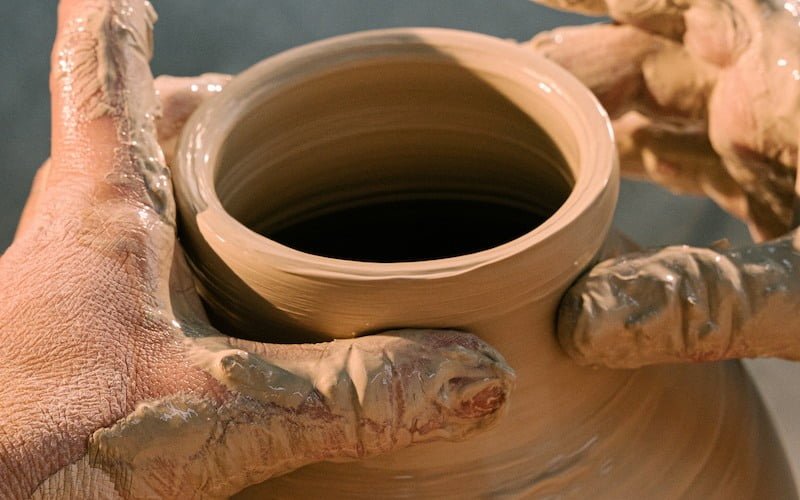Curated by: Sergio A. Martínez
Craftsmanship is timeless, being an integral practice to human history since the dawn of our species. It represents a quality of uniform excellence, often characterized by removing unnecessary elements from a design and bringing out the best in the crafted object. And although craftsmanship is often associated with aesthetic pursuits like painting or sculpture, its importance goes beyond; it serves as a powerful reminder of the value of hard work and skilled ‘hands-on’ effort, a notion that helps us tap into our creativity and realize our ambitions. Mastering craftsmanship, therefore, is not only a source of motivation but also a means to change our current place for the better.
And considering how technology is the biggest agent of change in our world, it might be interesting to find out if the idea of craftsmanship has a place in this modern computer-driven reality. Is there craftsmanship to be found in software development? After all, programming consists of a combination of hard skills, innovative techniques, and a love for perfecting processes constantly that translate into high-quality products. It can be said that developers practice a craftsmanship approach in every project, taking pride in the details and focusing on making changes that have a clear impact on performance, stability, scalability, and many other aspects of development.
However, for most people, it’s easy to overlook the art behind software development, but the craftsmanship is present in every little task. From developing feature-rich designs and diagrams to writing clean and error-free code, the job of a software developer involves multiple levels of precision and detail that demand proper diligence. A well-crafted piece of software is an accomplishment, just as a well-crafted painting or sculpture would be, with each step involving thoughtfulness, attention to detail, and careful consideration. There’s an almost creative element to the job of writing software since developers must find ways to solve programming puzzles with innovative ideas and stylish solutions, so designers must have some artistic understanding of how users interact with technology. Nonetheless, this approach must coexist with the demands of an industry that is always moving forward, making today’s software development an incredibly ingenious and complex task that must always rise to the challenge.
The balance between craftsmanship and business

Crafting software is an attempt to capture a responsive balance between the idealistic embrace of artistic virtue and the practical needs of a business environment. On one hand, developers want to use their creativity to build something meaningful that reflects a sense of usefulness and long-lasting quality. On the other hand, there are ever-present realities that require careful decisions about timelines and budget, and finding harmony between these factors while developing software can be hard to navigate. However, it’s by solving this creative tension that developers ultimately can create elegantly well-rounded solutions.
Still, it’s no small feat: both angles need to be taken into consideration when pursuing a successful project. It takes careful forethought, planning, and collaboration from everyone involved (developers, project managers, stakeholders, etc.) to prioritize craftsmanship over profit while still satisfying the business demands. The biggest challenge here is maintaining quality while meeting time and budget constraints; if a product is rushed out the door too soon or neglected too long, users will pay the price with buggy applications or poor feature implementation, so it’s important to have an experienced team of professionals who understand their collective responsibility to craft perfect software while keeping in mind all other key objectives.
As we have already mentioned, the importance of craftsmanship in software development can often be overlooked. It’s easy to rush through a project to meet a deadline and sacrifice quality, but this doesn’t end well in the long run. Quality software is efficient, minimizing user frustration and increasing overall productivity, and crafting robust software requires an investment of time and thought that demands an eye for details both big and small. High-quality craftsmanship requires rigorous testing before deployment, as well as regular updates after implementation to ensure maximum efficiency at all times. In other words, software craftsmanship may involve an initial extra effort, but it pays off by creating an outstanding user experience for years.
Thus, craftsmanship is an idea that one should take care of and pride in when writing code. Being a software craftsman involves learning, understanding, and researching best practices to write amazing code, with a developer constantly asking themselves questions such as: are there better ways to refactor this piece of code? How can I make this easier to maintain? Is there an accepted design pattern that I could use here? By taking the time to ask these questions themselves, developers can ensure that their software is of higher quality and more robust than it otherwise would be, the result of putting your knowledge, dedication, experience, and passion for problem-solving at the forefront. Craftsmanship in software development requires attention to detail, continual refinement from iteration to iteration, and an interest in learning new technologies for their work and aims for excellence when building quality products.
Craftsmanship at every level

True craftsmanship in software development can be seen in its intricate details. Developers who take their time to create their projects with a focus on the elegance of style and precision when producing games, websites, or applications that stand out from the crowd. Crafting a piece of software to be efficient and durable takes skill and talented developers to understand the importance of meeting user expectations, and making sure their work lives up to those standards by adding creative touches wherever possible. Part art, part science—true craftsmanship in software development makes the difference between an ordinary application and one that really shines when developers care about…
- Writing clean and maintainable code: Craftsmen developers strive to write code that is easy to read, understand, and maintain over time. This means using meaningful variable names, avoiding duplication, and following established coding standards.
- Building scalable software: Good software craftsmen know how to design and build software systems that can scale to meet the needs of a growing user base. This means understanding how to distribute workloads across multiple machines and designing software with horizontal scaling in mind.
- Emphasizing testing: Crafting software means placing a strong emphasis on testing. Developers who practice craftsmanship ensure that their code is thoroughly tested and they use automated testing tools to make sure that any changes they make to the code do not break existing functionality.
- Being efficient with code: A software craftsman understands the importance of being efficient with code. They know that every line of code that they write has an impact on the overall performance of the application, so they strive to write code that is as lean and efficient as possible.
- Continuous improvement: Finally, software craftsmen are always looking for ways to improve their skills and the quality of their work. They stay up-to-date with the latest tools and techniques, and they are always looking for ways to improve their code and their processes.
In short, software development is an ever-evolving understanding of how coding works and communicates with different systems. By developing software, coders, and engineers are constantly pushing the boundaries of what can be done, learning from a variety of sources, and tackling complex tasks in efficient ways. It’s hard work, but the craftsmanship exhibited within can be extremely rewarding, as it offers an opportunity to create something useful and marketable that solves a problem or makes life easier for everyone. By continuously pushing their own boundaries of excellence, software developers are able to develop projects that achieve unprecedented levels of quality while ensuring usability and scalability. It’s this iterative approach that separates the best software projects from those just good enough—and it’s the commitment to continuous improvement and craftsmanship exhibited by software developers that allow users to seamlessly interact with highly sophisticated products.
The Key Takeaways
- When it comes to software development, the value of craftsmanship cannot be overstated; creativity and artistry are critical for any successful piece of software out there.
- What craftsmanship provides is an inspiration to always become better, strive for a better result, and grow new skills and talents that will result in a more positive outcome for any project.
- However, finding the balance between craftsmanship and the business needs of the organization can be tricky, and must be navigated carefully.
- Craftsmanship is found at every level of a development project, and the best developers will take it seriously to build the best possible product at the end.
